Human beings have long been captivated by the enigmatic world of dreams. Across cultures and throughout history, dreams have been viewed as powerful vessels of hidden knowledge and insight. They offer a glimpse into the depths of our subconscious, revealing messages and symbols that can guide us on our journey of personal growth and self-discovery. One particularly fascinating aspect of dream symbolism is the presence of archetypes – universal and timeless images that hold profound meaning and resonance. In this article, we will explore the power of archetypal symbols in dream messages, examining their significance, interpretation, and utilization in our waking lives. By unraveling the mysteries of these archetypes, we can gain valuable insights into our psyche and embark on a transformative journey towards self-realization.
The Significance of Dream Symbols
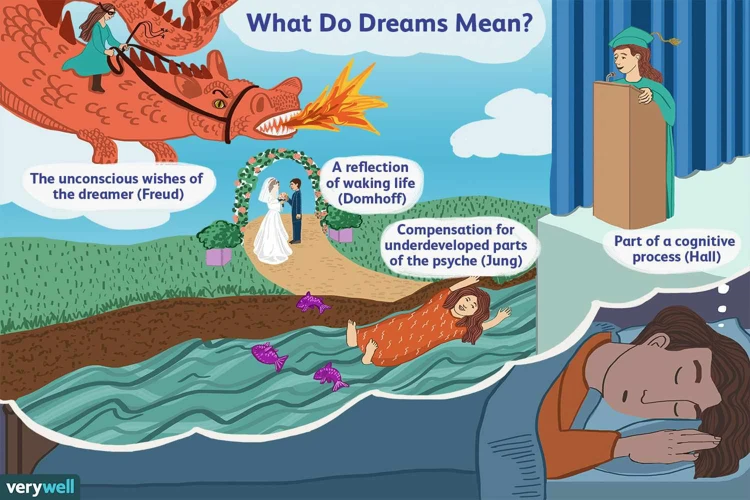
Dream symbols hold great significance in understanding the messages and meanings embedded within our dreams. These symbols act as a language of the subconscious, communicating with us through vivid and often cryptic imagery. Each symbol carries its own unique significance and interpretation, serving as a gateway to unlocking hidden emotions, desires, fears, and experiences. The significance of dream symbols lies in their ability to bridge the gap between the conscious and unconscious mind, revealing subconscious thoughts and patterns that may not be readily apparent in our waking lives. When we pay attention to these symbols and explore their deeper meanings, we can gain valuable insights into our inner world, our relationships, and our personal growth. By recognizing and analyzing dream symbols, we can uncover the hidden messages that our subconscious is trying to convey and use them as tools for self-reflection, healing, and personal transformation. To learn more about symbols in dreams, you can explore resources on symbol interpretation or explore the meanings behind common symbols like animals, water, or flying.
The Role of Archetypes in Dreams
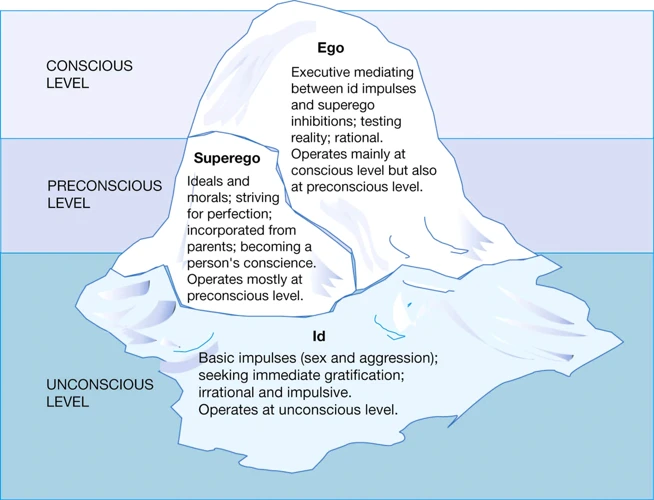
The role of archetypes in dreams is paramount in understanding the deeper layers of symbolic meaning that unfold in the realm of dreams. Archetypes are universal and ancient patterns of human experience that have been passed down through generations. They are deeply ingrained in our collective unconscious and serve as reference points for our understanding of the world. In dreams, archetypal symbols often appear as iconic figures, representing aspects of the human psyche and the broader human experience. These archetypes can take on various forms, such as the hero, the wise old man or woman, the mother, or the trickster. Each archetype carries its own set of characteristics, attributes, and symbolic meanings. These archetypal figures immerse our dreams with profound symbolism, unlocking rich layers of meaning and tapping into the collective wisdom of humanity. By recognizing these archetypes and exploring their significance, we can gain insights into our own identities, struggles, and aspirations. The role of archetypes in dreams is to guide us on a journey of self-discovery and transformation, connecting us to the deep wellspring of universal knowledge that resides within our collective unconscious. To delve further into the symbolism and meaning of archetypes, you can explore resources on numerical symbols and their interpretations, as well as various books and studies dedicated to the exploration of archetypal psychology.
The Power of Archetypal Symbols
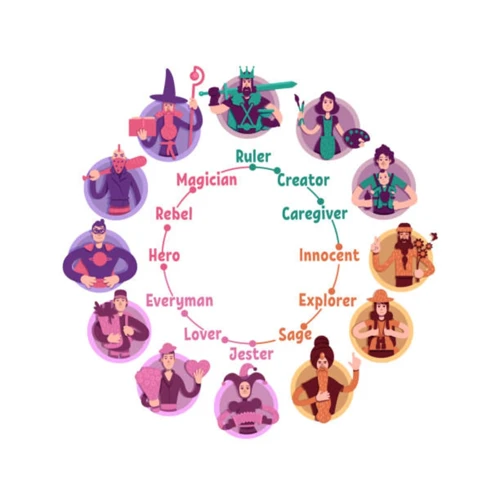
The power of archetypal symbols in dreams cannot be overstated. These symbols possess a universal nature, transcending cultural and individual boundaries, making them a language that speaks to the depths of the human psyche. Archetypal symbols evoke a profound emotional resonance within us, tapping into the collective unconscious and stirring up deep-seated feelings and intuitions. They serve as gateways to insights about our personal psyche, revealing aspects of ourselves that may be hidden or repressed in our conscious awareness. By working with archetypal symbols, we can access a wellspring of wisdom and transformation, as they hold the potential for healing, growth, and self-realization. The power of archetypal symbols lies in their ability to guide us towards a deeper understanding of ourselves and the world around us, making them invaluable tools for self-exploration and personal development.
1. Universal Nature of Archetypes
The universal nature of archetypes is a fundamental aspect of their power and significance in dream symbolism. Archetypes are primal, ancient images and patterns that reside in the collective unconscious, transcending time, culture, and individual experience. They are the blueprints of human existence that exist deep within our psyche, guiding and influencing our thoughts, emotions, and behaviors.
These archetypes tap into shared human experiences and fundamental aspects of the human condition, such as birth, death, love, power, and transformation. They reflect universal themes and motifs that have been passed down through generations, shaping our collective consciousness. Whether it’s the archetype of the mother symbolizing nurturing and fertility or the hero archetype representing bravery and the journey of self-discovery, these archetypal symbols tap into a collective reservoir of meaning that is deeply ingrained within us.
The universal nature of archetypes allows them to resonate universally, speaking to individuals across cultures and time periods. They evoke primal emotions and instincts, stirring something within us that feels familiar and deeply innate. This is why archetypal symbols often have a profound and lasting impact on us when they appear in our dreams.
It’s important to note that while archetypes may have universal qualities, their specific manifestations and interpretations can vary depending on individual experiences and cultural contexts. The precise symbolism and meaning of an archetype in a dream can be influenced by personal associations and cultural symbolism. Understanding the universal nature of archetypes helps us appreciate their power and tap into their transformative potential as we explore and interpret their presence in our dreams.
2. Emotional Resonance and Symbolism
Emotional resonance plays a crucial role in the power of archetypal symbols in dreams. Symbols have the ability to evoke deep emotional responses within us, regardless of our cultural or personal backgrounds. They tap into primal and universal aspects of human experience, triggering emotional states that resonate with our own inner world. This emotional resonance is what gives symbols their potency and the ability to convey profound messages. When we encounter a symbol in a dream that elicits a strong emotional response, it is a clear indication that the symbol holds personal significance for us. For example, a snake may symbolize fear or transformation for one person, while for another it may represent wisdom or healing. By paying attention to the emotions evoked by dream symbols, we can gain deeper insights into our own psychological landscape and uncover hidden aspects of ourselves. The emotional resonance of symbols serves as a doorway to our subconscious, allowing us to access and process suppressed or unacknowledged emotions. It is through this emotional connection to symbols that we can harness their transformative power and integrate their wisdom into our waking lives.
3. Insights into Personal Psyche
Insights into our personal psyche are a profound and transformative aspect of working with archetypal symbols in dreams. When we delve into the symbolism of our dreams, we gain access to a deeper understanding of ourselves and our inner world. The archetypal symbols that appear in our dreams reveal hidden aspects of our personality, desires, fears, and unresolved emotions. These symbols serve as mirrors, reflecting back to us the parts of ourselves that we may have overlooked or suppressed. By analyzing these symbols and their meanings, we can gain valuable insights into our core beliefs, motivations, and patterns of behavior.
For example, a dream featuring a snake may symbolize transformation, shedding old habits or beliefs, or the awakening of our primal instincts. This symbol could indicate that we are in a period of personal growth and change. Alternatively, it could also represent hidden fears or unresolved issues that need to be addressed. Through reflection and exploration of these archetypal symbols, we can uncover the deeper layers of our psyche and gain clarity about our innermost desires and motivations.
Insights into our personal psyche through archetypal symbols can also help us identify and heal emotional wounds or traumas. For instance, a recurring dream about being chased may suggest unresolved feelings of fear, anxiety, or past experiences that we have not fully processed. By recognizing and working with these symbols, we can begin to unravel the underlying emotions and experiences that may be holding us back or causing distress in our waking lives. This deeper understanding allows us to address and heal these wounds, leading to personal growth and emotional well-being.
Insights into our personal psyche gained from archetypal symbols can also guide us towards self-empowerment and transformation. As we become more aware of our subconscious patterns and motivations, we can consciously choose to change or release those that no longer serve us. For example, if a dream reveals a recurring theme of being trapped, it may indicate a feeling of being stuck or limited in our waking life. We can use this insight as a catalyst for taking steps to break free from self-imposed limitations and embrace new opportunities.
Insights into our personal psyche through the interpretation of archetypal symbols in dreams offer profound opportunities for self-discovery, healing, and personal growth. By exploring and reflecting upon these symbols, we gain a deeper understanding of ourselves, our emotions, and our motivations. This newfound awareness empowers us to make conscious choices, heal emotional wounds, and embark on a transformative journey towards self-realization.
Interpreting and Utilizing Archetypal Symbols
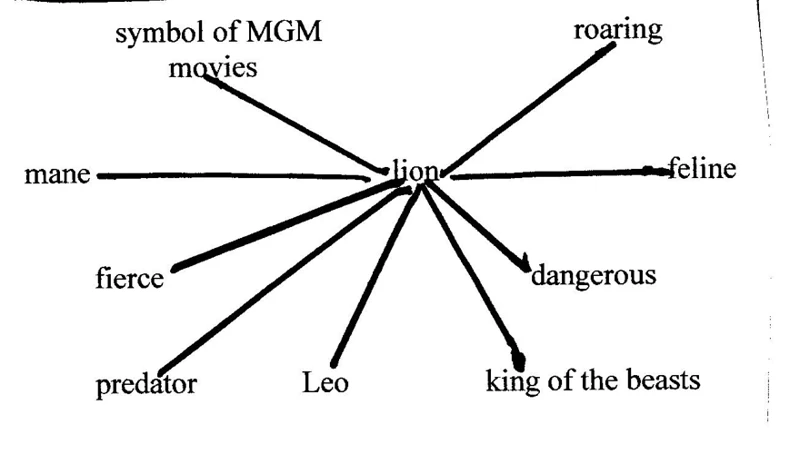
Interpreting and utilizing archetypal symbols in our dreams can offer profound insights into our psyche and guide us towards personal growth and self-realization. One essential aspect of interpreting these symbols is analyzing the collective and personal associations they hold. Archetypes, being universal in nature, often evoke similar emotional responses and cultural meanings across different individuals and societies. By exploring the common threads within these associations, we can unravel the deeper layers of meaning attached to archetypal symbols in our dreams. Keeping a dream journal and reflecting on the symbolism can also aid in the interpretation process, allowing us to uncover patterns and recurring themes that shed light on our subconscious desires, fears, and unresolved issues. In addition to interpretation, utilizing archetypal symbols involves integrating them into our waking life. This integration can be achieved through creative expression, such as writing, art, or symbolism, or by actively embodying the qualities and lessons that the archetype represents. By consciously working with archetypes and their symbols, we can tap into their transformative power and harness their wisdom to facilitate personal growth and holistic well-being.
1. Analyzing Collective and Personal Associations
Analyzing collective and personal associations is a crucial step in interpreting and utilizing archetypal symbols in dreams. When we encounter a particular symbol in our dreams, it is important to consider both its collective and personal associations. Collective associations refer to the shared meanings and symbolism attached to a symbol within a cultural or societal context. These can include common archetypes such as the mother figure representing nurturing and the wise old man embodying wisdom. By understanding the collective associations of a symbol, we can gain insights into the broader cultural meanings and interpretations it holds.
In addition to collective associations, personal associations are equally important. Personal associations are unique to each individual and are based on personal experiences, memories, beliefs, and emotions. For example, a snake may be associated with fear for one person due to a past traumatic experience, while for another person it may symbolize transformation or healing. To analyze personal associations, it is helpful to reflect on how a symbol makes you feel and any specific memories or experiences it brings to mind.
By combining both collective and personal associations, we can obtain a more comprehensive understanding of the archetypal symbol and its message in our dreams. This process of analysis allows us to tap into the deeper layers of our subconscious and gain valuable insights into our own psyche. It helps us to connect with the universal themes and energies that underlie our dreams, guiding us towards a greater understanding of ourselves and our journey of personal growth.
2. Journaling and Reflecting on Dream Symbolism
Journaling and reflecting on dream symbolism is a powerful tool for deepening our understanding of our dreams and their significance. This practice involves keeping a dream journal and regularly recording details of our dreams, including the specific symbols that stand out to us. By writing down our dreams, we capture their essence and preserve them for later analysis. When journaling, it is helpful to include as much detail as possible, such as the people, places, objects, and emotions present in the dream.
Once we have documented our dreams, the next step is to reflect on the symbolism within them. This involves carefully examining each symbol and considering its personal and collective associations. We can start by asking ourselves questions like “What does this symbol mean to me?” and “Does it remind me of anything from my past or present life?” By exploring our own unique connections to these symbols, we can gain deeper insights into their personal meanings.
In addition to personal associations, it is also valuable to consider the collective meaning of symbols. Certain symbols have been universally recognized and hold similar significance across cultures and throughout history. By researching the cultural, mythological, or historical meanings of specific symbols, we can broaden our understanding and enrich our interpretations.
Reflecting on dream symbolism can aid in recognizing patterns, recurring themes, and connecting dreams to our waking life experiences. It enables us to decode the hidden messages embedded in our dreams and apply their wisdom to our daily lives. Journaling and reflecting on dream symbolism is a personal and introspective practice that helps us cultivate self-awareness and deepen our connection with our subconscious mind.
3. Integration of Archetypes in Waking Life
Integration of archetypes in waking life is an essential aspect of working with dream symbolism and harnessing its power for personal growth. Once we have identified and interpreted the archetypal symbols present in our dreams, we can bring their wisdom and energy into our everyday lives. Here are three key ways in which we can integrate archetypes in waking life:
1. Embody the Archetype: One way to integrate archetypes is by embodying their qualities and characteristics. For example, if we encountered the archetype of the Wise Old Woman or Wise Old Man in our dream, we can consciously strive to embody wisdom, insight, and a calm demeanor in our waking life. By connecting with the essence of the archetype, we tap into its transformative power and can make positive changes in our behavior and decision-making.
2. Seek Guidance and Inspiration: Archetypes can serve as sources of guidance and inspiration in our waking life. We can look to archetypal figures such as the Hero or Heroine for courage and determination when facing challenges. The archetype of the Mother can remind us to nurture ourselves and others with compassion and care. By consciously seeking guidance from these archetypes, we can draw strength and clarity as we navigate our life’s journey.
3. Create Rituals and Symbolic Acts: Rituals and symbolic acts can be powerful ways to integrate archetypes in our daily lives. We can create personal rituals that align with the energy and symbolism of a specific archetype, such as lighting a candle or meditating in honor of the Shadow archetype to explore and integrate our unconscious aspects. Symbolic acts like wearing a piece of jewelry or carrying an object that represents a particular archetype can also serve as reminders of the energy and qualities we wish to cultivate.
By integrating archetypes in our waking life, we bridge the gap between the dream realm and our everyday reality. We tap into the transformative potential of archetypal symbolism, allowing it to infuse our thoughts, actions, and relationships with greater depth and meaning. This integration process opens the doorway to self-discovery, personal growth, and a more conscious and empowered existence.
Common Archetypal Symbols and Their Meanings
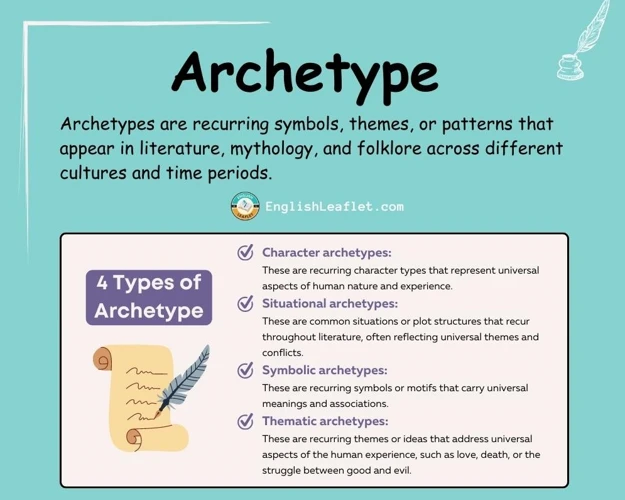
Common archetypal symbols found in dreams carry deep meaning and can offer profound insights into our psyche. One prominent archetype is the Shadow, representing the hidden and suppressed aspects of ourselves that we may not acknowledge or accept. It often manifests as a dark, mysterious figure associated with fear and negativity, but by embracing and integrating it, we can achieve wholeness and personal growth. Another significant archetype is the Wise Old Man/Woman, symbolizing inner wisdom and guidance. This archetype often appears as a mentor or sage figure, imparting valuable knowledge and helping us navigate through life’s challenges. The Hero/Heroine archetype represents bravery, resilience, and personal transformation. Dreams featuring this archetype often highlight the potential for growth and self-discovery through facing adversity. The Mother archetype embodies nurturing and caregiving qualities, symbolizing love, protection, and emotional support. Finally, the Trickster archetype reflects the unpredictable and mischievous aspects of our unconscious, urging us to explore our hidden desires and confront our own deceitful tendencies. Understanding these common archetypal symbols and their meanings can shed light on our dreams and offer guidance for our personal and spiritual development.
1. The Shadow and Its Significance
The concept of the shadow, as introduced by Swiss psychologist Carl Jung, plays a significant role in dream symbolism and personal growth. The shadow represents the unconscious aspects of ourselves that we have repressed or denied. It embodies our darker, instinctual nature, including our fears, desires, and impulses that society may deem unacceptable. In dreams, the shadow often appears as a mysterious or ominous figure, representing those suppressed parts of ourselves that we have not fully acknowledged or integrated.
The significance of the shadow lies in its ability to provide us with valuable insights into our inner conflicts and unresolved issues. When we encounter the shadow in our dreams, it serves as a call to confront and embrace these hidden aspects of ourselves. By acknowledging and integrating the shadow, we can move toward a more balanced and authentic life.
Symbolically, the shadow can manifest in various forms. It may appear as a person or creature that embodies our fears or represents our repressed desires. It can also manifest as a symbol or archetype, such as the dark forest, the unknown or taboo, or even death itself. Exploring and deciphering the symbolism of the shadow in our dreams can lead to a deeper understanding of our own complexities and propel us towards personal growth and transformation.
To interpret the significance of the shadow in our dreams, it is essential to examine the emotions and reactions that arise when encountering it. Is there fear or resistance? Or is there a sense of curiosity or acceptance? These emotional responses provide clues as to how we perceive and relate to our own hidden aspects. By embracing and integrating the shadow, we can cultivate greater self-awareness, release unconscious patterns, and ultimately experience a more integrated and fulfilling life journey.
2. The Wise Old Man/Woman and Inner Wisdom
The archetype of the Wise Old Man/Woman is a powerful symbol that often appears in dreams, representing the presence of inner wisdom and guidance. This archetype embodies the accumulated knowledge, experience, and insight that resides within us. The Wise Old Man/Woman may take the form of a mentor, teacher, or spiritual guide within the dream, offering sage advice or imparting profound wisdom. This symbol invites us to tap into our own inner wisdom and intuition, urging us to trust ourselves and make decisions based on our innate knowledge. The Wise Old Man/Woman reminds us that we have a deep well of wisdom within us, waiting to be accessed and utilized. By recognizing and embracing this archetype in our dreams, we can gain clarity, find solutions to challenges, and navigate our life’s path with greater confidence. When we awaken from a dream featuring the Wise Old Man/Woman, it is important to reflect on the guidance they offered and contemplate how we can integrate that wisdom into our waking life. Perhaps it is time to trust our instincts, seek out mentorship, or engage in practices that cultivate our inner wisdom, such as meditation or journaling. The Wise Old Man/Woman archetype acts as a reminder that we possess the resources and knowledge needed to navigate life’s complexities, if only we learn to listen to the wisdom that resides within us.
3. The Hero/Heroine and Personal Transformation
The archetype of the hero/heroine in dreams represents the journey of personal transformation and growth. This powerful symbol often emerges when we are faced with challenges or opportunities for change in our lives. The hero/heroine archetype embodies the qualities of courage, bravery, and resilience, inspiring us to confront our fears and overcome obstacles on our path to self-discovery. When this archetype appears in a dream, it signifies our inner potential to rise above adversity and embrace our true selves.
The hero/heroine’s journey typically follows a pattern of departure, initiation, and return. In the departure phase, the dreamer may receive a call to adventure or embark on a quest that requires them to leave their comfort zone. This represents the willingness to explore new territories within themselves and take on challenges that will facilitate personal growth.
During the initiation phase, the hero/heroine encounters various trials and tests, each presenting an opportunity for self-reflection and transformation. These trials may symbolize our inner struggles, conflicts, or the need to confront suppressed emotions or unresolved issues. As the hero/heroine triumphs over these challenges, they gain wisdom, strength, and a deeper understanding of themselves.
Finally, in the return phase, the hero/heroine brings their newfound wisdom and transformation back to their everyday life. They become a source of inspiration and guidance, not only for themselves but also for those around them. This archetype encourages us to embrace our own heroic qualities, to face our fears and limitations, and to embark on a journey of personal growth and self-mastery.
Dreams featuring the hero/heroine archetype invite us to reflect on the areas of our lives where we may be holding back or resisting change. They encourage us to tap into our inner strength and embrace the transformative process, knowing that through our challenges and triumphs, we can emerge as the heroes and heroines of our own stories. By recognizing and embodying the qualities of the hero/heroine archetype, we can navigate through life with courage, resilience, and a deeper sense of purpose.
4. The Mother and Nurturing Aspects
The archetype of the mother is a powerful symbol in dream analysis, representing nurturing, caretaking, and unconditional love. When the mother appears in dreams, it often signifies a need for emotional support and guidance. This symbol can manifest in various forms, such as our own mother, a maternal figure, or even as a representation of our own nurturing qualities. The mother archetype can also symbolize fertility, creativity, and the potential for growth and transformation. Dreams involving the mother archetype might indicate a longing for maternal love and protection, a desire for emotional fulfillment, or a need to reconnect with our own nurturing instincts. Exploring the mother archetype in dreams can offer insights into our relationships, our feelings of security and comfort, and our journey towards self-acceptance and self-care. By acknowledging and embracing the nurturing aspects of the mother archetype, we can cultivate a greater sense of compassion, empathy, and emotional well-being in our waking lives.
5. The Trickster and the Unconscious
The Trickster archetype in dreams represents the mischievous and unpredictable aspects of the unconscious mind. This archetype is often depicted as a playful or cunning figure who disrupts the natural order of things and challenges societal norms. The Trickster symbolizes a powerful force that can bring about transformation and change. In dreams, the appearance of the Trickster often indicates a need to confront and navigate the shadow aspects of ourselves that we may not be fully aware of. The Trickster may manifest as a person, an animal, or even an inanimate object, and its purpose is to disrupt our routines and challenge our beliefs. This archetype reminds us to embrace spontaneity, take risks, and step outside of our comfort zones. It urges us to question the status quo and explore aspects of our psyche that may have been repressed or ignored. By understanding and integrating the Trickster archetype in our dreams, we can tap into the power of the unconscious and embark on a journey of self-discovery and personal growth.
Exploring Cultural and Historical Archetypes
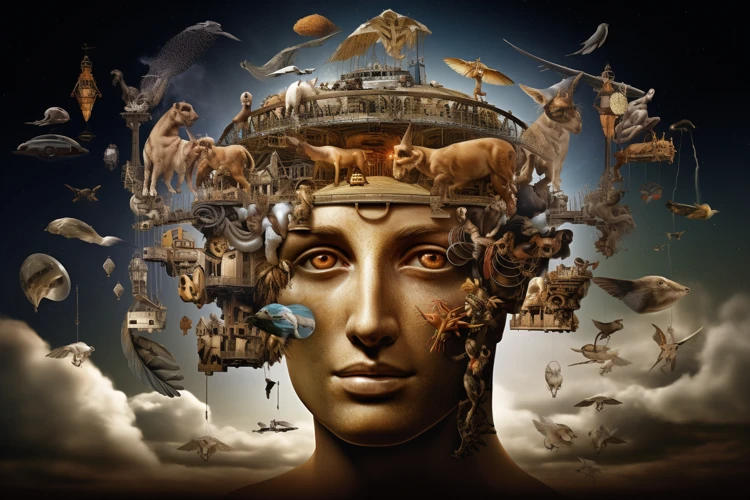
Exploring cultural and historical archetypes in dreams opens up a vast realm of symbolism deeply rooted in our collective consciousness. These archetypes are universal symbols that transcend individual experiences and touch upon shared cultural and historical narratives. From mythological figures to cultural symbols, they carry profound meaning and reflect the values, beliefs, and stories of a particular society or period. Mythological archetypes, such as gods and goddesses, heroes and heroines, offer insight into our own personal quests for meaning and transformation. Cultural symbols, on the other hand, connect us to the traditions, customs, and collective memories of our community. Historical figures, like influential leaders or significant events, can also appear in dreams to symbolize important themes or lessons. By exploring these cultural and historical archetypes, we gain a deeper understanding of our identity, heritage, and the broader human experience.
1. Mythological Archetypes and Their Influence
Mythological archetypes have a profound influence on our dreams and hold deep symbolic meaning. These archetypes originate from ancient myths and folklore that have been passed down through generations, making them deeply ingrained in our collective consciousness. These archetypes represent universal themes and aspects of the human experience, transcending time and culture. For example, the hero archetype, seen in stories of heroes like Hercules or Odysseus, symbolizes the journey of self-discovery and the triumph of good over evil. The wise old man/woman archetype, represented by figures such as Merlin or Athena, embodies wisdom, guidance, and the quest for knowledge. By appearing in our dreams, these mythological archetypes tap into our collective knowledge and resonate with our own personal journeys. They serve as mirrors reflecting our own struggles, desires, and potential for growth. Exploring mythological archetypes and their influence helps us understand the deeper layers of our dreams, offering insights into our own heroic journeys or the need for guidance and wisdom in our lives. By recognizing these archetypes and the significance they hold, we can better interpret and utilize the messages they bring forth from our subconscious mind.
2. Cultural Symbols in Dreams
Cultural symbols play a significant role in shaping our dreams and the meanings behind them. These symbols are deeply ingrained in our collective consciousness and are influenced by our cultural background, traditions, and beliefs. Cultural symbols in dreams can include elements such as national flags, traditional attire, religious symbols, or even cultural rituals. Each culture has its own unique set of symbols that hold specific meanings and associations within that cultural context. For example, in Western cultures, the symbol of a white wedding dress may represent purity and commitment, while in some Eastern cultures, the color red may symbolize good luck and happiness. It’s important to note that cultural symbols can also vary within a culture, as subcultures and individual experiences may contribute additional layers of meaning to certain symbols. Understanding the cultural symbols in our dreams requires an awareness of our own cultural background and an openness to explore the rich tapestry of symbols that influence our dreamscape. By recognizing and interpreting these cultural symbols, we can gain a deeper understanding of our own heritage, values, and the societal influences that shape our perceptions and experiences.
3. Historical Figures and Their Symbolism
When exploring the realm of archetypal symbols in dreams, it is not uncommon to encounter historical figures and their symbolic significance. Historical figures, such as famous leaders, artists, or philosophers, can appear in our dreams to convey deeper messages and insights related to their historical significance or the qualities they embody. These figures often represent archetypal energies that are relevant to our lives, such as courage, creativity, wisdom, or determination. For example, dreaming of Abraham Lincoln may symbolize the need for strong leadership or the importance of standing up for one’s beliefs. Similarly, dreaming of Leonardo da Vinci could imply a call to explore one’s artistic or innovative side. These historical figures act as powerful symbols, connecting us to collective consciousness and inviting us to tap into their inspiring qualities. It is important to reflect on the specific historical figure that appears in a dream and consider their actions, accomplishments, and characteristics to gain a deeper understanding of the symbolism they represent. By consciously engaging with the symbolism of historical figures in our dreams, we can draw upon their wisdom and attributes to inspire personal growth and transformation.
Personal Reflections and Growth through Archetypal Dreams
Personal reflection and growth can be profoundly enhanced through the exploration of archetypal dreams. When we engage with the archetypal symbols that manifest in our dreams, we open ourselves up to a deeper understanding of our own psyche and inner world. These dreams serve as mirrors, reflecting back to us aspects of ourselves that may be hidden or unacknowledged. Through reflection and interpretation, we gain insight into our own patterns, desires, fears, and potential for transformation.
One way to engage in personal reflection with archetypal dreams is through journaling. By writing down our dreams and our interpretations of the symbols within them, we can access a deeper level of self-awareness and reflection. In our dream journal, we can analyze the emotions, events, and archetypal symbols that appeared, and explore how they may connect to our waking life experiences or current challenges.
Another powerful practice is engaging in dialogue with the archetypal figures that appear in our dreams. Through meditation or visualization, we can actively imagine a conversation or interaction with the archetypes. This process allows us to tap into their wisdom and insights, gaining a deeper understanding of ourselves and the challenges we may be facing.
Consciously integrating the lessons and symbolism from archetypal dreams into our waking life can foster personal growth. By recognizing the archetypal patterns that appear in our relationships, work, and daily experiences, we can make conscious choices and embrace qualities that align with our desired growth and transformation.
In essence, personal reflection and growth through archetypal dreams is an ongoing process of self-discovery and self-realization. It requires openness, curiosity, and a willingness to explore the depths of our unconscious. By engaging with archetypal symbols and integrating their wisdom into our waking life, we can embark on a transformative journey, unlocking our true potential and living a more authentic and fulfilling existence.
Conclusion
In conclusion, the power of archetypal symbols in dream messages is undeniable. These universal and timeless images hold immense significance and serve as a bridge between the conscious and unconscious mind. By delving into the depths of our dreams and analyzing the archetypes present, we can gain valuable insights into our personal psyche, emotions, and experiences. The significance of dream symbols lies in their ability to provide us with a deeper understanding of ourselves and the world around us. They offer a unique language of the subconscious, guiding us towards self-reflection, growth, and transformation. By interpreting and utilizing archetypal symbols, whether through analyzing collective and personal associations, journaling and reflection, or integrating them into our waking lives, we can reap the rewards of self-discovery and personal development. Our dreams serve as a powerful tool for inner exploration, and by harnessing the power of archetypal symbols, we can unlock the hidden treasures that lie within. Embracing the significance of dream symbols allows us to embark on a journey of self-awareness and self-realization, ultimately leading us to a more fulfilling and meaningful existence.
Frequently Asked Questions
1. Can dream symbols have different meanings for different people?
Yes, dream symbols can have different meanings for different individuals. While some symbols may have universal associations, the personal experiences, cultural background, and individual beliefs of the dreamer can significantly influence the interpretation of symbols in their dreams.
2. How can I remember and recall my dream symbols?
Keeping a dream journal can help you remember and recall your dream symbols. By writing down your dreams immediately upon awakening, you can capture the details and symbols while they are still fresh in your mind. Regular journaling can also enhance your dream recall over time.
3. Can dreams contain multiple symbols at once?
Yes, dreams can contain multiple symbols at once. Dreams often present complex scenarios where multiple symbols intertwine and interact with one another. These symbols may work together to convey a unified message or represent different aspects of your psyche.
4. Are all dream symbols universal?
While some dream symbols have universal associations across cultures and time, not all symbols are universal. Many symbols can have personal or cultural significance, influenced by the dreamer’s unique experiences, beliefs, and upbringing.
5. How can I interpret symbols that seem confusing or contradictory?
When faced with confusing or contradictory symbols, it is important to consider the context and emotions surrounding the symbols. Analyzing the overall storyline and your personal feelings during the dream can provide additional insights into the symbolic meaning and help resolve any apparent contradictions.
6. Are there any online resources to help interpret dream symbols?
Yes, there are several online resources available to help interpret dream symbols. Websites and books dedicated to dream interpretation offer valuable insights and symbol dictionaries that can assist you in understanding the meanings behind various symbols in your dreams.
7. Can dream symbols change over time?
Yes, dream symbols can change over time. As you grow and evolve, your dreams may incorporate new symbols or assign different meanings to previously encountered symbols. Paying attention to recurring symbols and any shifts in their significance can provide valuable information about your personal development.
8. Can working with a dream analyst or therapist help in understanding dream symbols?
Yes, working with a dream analyst or therapist can be beneficial in understanding dream symbols. These professionals have experience and training in dream analysis and can provide valuable insights, interpretations, and guidance to help you navigate the symbolism and messages within your dreams.
9. Can dream symbols predict the future?
Dream symbols are not usually meant to predict the future in a literal sense. However, they can offer glimpses into your inner thoughts, emotions, and unresolved issues, which can indirectly influence the choices and actions you take in your waking life.
10. Are there specific techniques to enhance dream symbol exploration?
Yes, there are techniques to enhance dream symbol exploration. Engaging in visualization exercises, meditation, and active imagination can help bring forth and explore the deeper meanings behind dream symbols. Additionally, discussing and sharing your dreams with others can provide new perspectives and insights into the symbolism present in your dreams.








